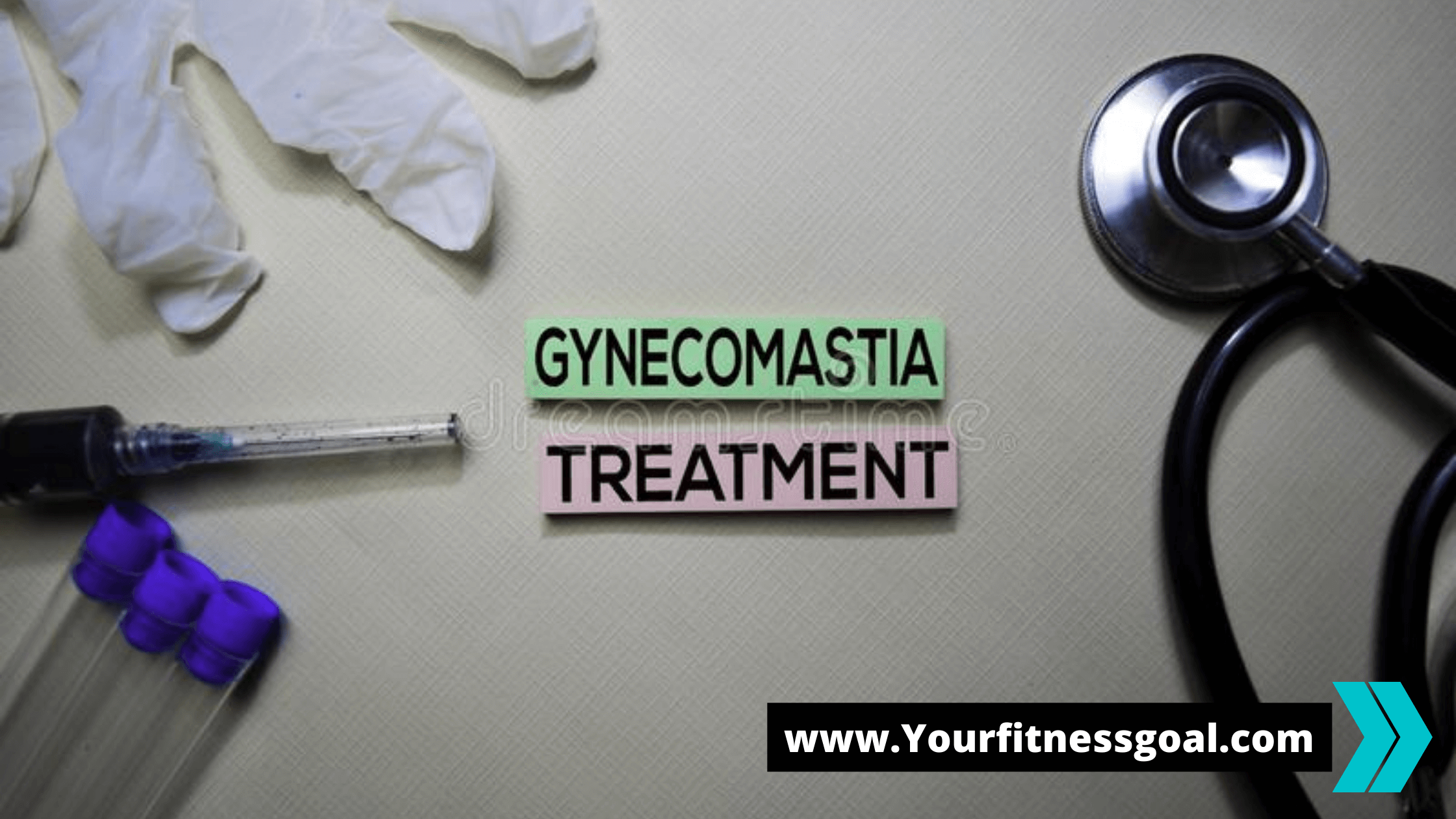You may be concerned about getting gynecomastia or gyno if you participate in bodybuilding.
Gynecomastia is a significant problem for bodybuilders because the sport is based on looks. These athletes frequently use anabolic drugs to enhance muscular growth, which might result in gyno owing to hormonal imbalances.
This article will teach you all there is to know about gyno in bodybuilders.
What is gynecomastia?
The growth of breast tissue in guys is known as gynecomastia. It can cause the chest and nipple area to look puffy, bloated, and breast-like. Although the disease is typically innocuous, it can create psychological and social anguish in people who suffer from it.
Gynecomastia is induced largely by an elevated circulating estrogen to androgen ratio, according to published studies.
Gynecomastia can be reversed in its early stages, depending on the development of the disorder. If the problem persists, the growth of nonfat breast tissue around the nipple region will need surgery to remove or will be irreversible.
It’s important to note that gynecomastia refers to the growth of glandular tissue around your nipple, which might be mistaken with fat accumulation in the chest.
While gynecomastia may be accompanied by extra fatty tissue around the chest, it is not caused by it. It is a particular ailment that may affect men of all fitness levels and body fat percentages.
Gynecomastia can develop in newborns, adolescent boys, and older men as a result of natural changes in hormone levels, however additional reasons exist.
In general, gynecomastia is not a major problem, although it can be difficult to deal with. Men and boys with gynecomastia do have discomfort sometimes in their breasts and can feel self-conscious.
Gynecomastia is the physically harmless development of breast tissue in males. In cases, surgery is required to remove it if it becomes permanent and be consistent through time.
What are the symptoms of gynecomastia?
According to clinical research, gynecomastia symptoms include expansion of breast tissue around the pectoral and nipple area, as well as the existence of a hard, symmetrical rubbery mass that spreads concentrically from the nipple.
This progression is followed by the harmless growth of glandular breast tissue.
As previously stated, gynecomastia can be associated with body fat accumulation in the same region. This, however, is not a defining sign of the disease.
Rubbery breast tissue in the nipple region and glandular breast tissue development are both signs of gynecomastia.
How common is gynecomastia in bodybuilders?
Although it’s impossible to say how frequent gynecomastia is in bodybuilders, it’s far from an uncommon occurrence.
According to subsequent studies, the disease affects around 30–40% of males in the general population.
Overall, it is reasonable to conclude that gynecomastia is not an isolated phenomenon and is likely to be encountered by many male bodybuilders, especially those who use anabolic steroids.
Gynecomastia is a prevalent problem among bodybuilders, however, the exact incidence of recurrence is difficult to determine.
What causes gynecomastia in bodybuilders?
According to research, there are several reasons for gynecomastia, including a variety of prescription medications.
As previously stated, a gynecomastia in bodybuilders is commonly induced by the use of anabolic steroids, such as exogenous testosterone derivatives. Gynecomastia develops as a result of the body’s effort to eliminate circulating testosterone in response.
Estradiol, a kind of estrogen hormone that results in the development of female secondary sex characteristics, is one of the consequences of testosterone breakdown.
The growth and expansion of breast tissue occur in guys with high estradiol levels.
Certain medications and over-the-counter supplements can also induce gynecomastia. However, not everyone has these negative effects.
Are there exercises that reduce gynecomastia?
Gynecomastia can occasionally be treated with exercise. However, if you have gynecomastia caused by glandular tissue development, which is frequent as a side effect of anabolic steroid usage, this technique is mostly unsuccessful.
Clinical gynecomastia is caused by the growth of glandular tissue, which cannot be decreased via diet or exercise and must be treated medically.
Because gynecomastia is essentially a medical problem and not an indication of being out of shape or deconditioned, exercise is not generally suggested as a particular therapy, even though it has several other advantages.
Even if you do not have clinical gynecomastia, extra fat tissue in the chest area might cause the look of gynecomastia.
In this case, a calorie deficit may be an efficient way to reduce total body fat. In combination with dietary treatments, exercise can assist improve calorie expenditure and promote weight loss.
Similarly, practicing chest workouts can assist improve the bulk of the pectoral muscles, which can help produce a more chiseled chest appearance if your body fat levels are low enough.
However, most gynecomastia bodybuilders already do chest workouts and have a lot of pectoral muscle.
Are there supplements that reduce gynecomastia?
Many over-the-counter supplements are promoted as being effective in decreasing gynecomastia. The key mechanisms are said to be enhanced estrogen processing, which means avoiding gynecomastia in the first place.
Among these supplements are indole-3-carbinol and white button mushroom extract.
choline mucuna pruriens vitamin E
Furthermore, in the United States, the Food and Drug Administration (FDA) does not regulate supplements in the same manner that it does prescription medications, and most claims about supplement efficacy are not backed by data.
Always check your healthcare practitioner before using any supplement, especially if your objective is to treat a medical issue.
How is gynecomastia treated?
The therapy for gynecomastia differs based on the underlying reason and stage of breast growth.
For anabolic steroid-induced gynecomastia, evidence supports the use of anti-estrogen medications such as tamoxifen to limit the quantity of estradiol produced by the anabolic steroid’s breakdown.
However, if gynecomastia has developed, only surgical excision of breast tissue will result in the condition being completely reversed.
This procedure, which must be performed by a skilled surgeon, entails the removal of glandular tissue as well as the liposuction of extra fatty tissues, if necessary.
Overall, surgical treatment of gynecomastia in bodybuilders is usually effective, with the study revealing that 98 percent of patients were satisfied with the cosmetic result of the procedure.
Given that anabolic steroid-induced gynecomastia is not a life-threatening disease, the primary aim is patient satisfaction with the treatment’s end look.
When to see a doctor –
Consult your doctor immediately if you face any of the following symptoms:
Swelling, ache, or discomfort
One or both breasts have a nipple discharge.
Are there bodybuilders with gynecomastia that have been successful?
Gynecomastia can cause significant psychological distress, particularly in athletes who are concerned about their bodies.
Fortunately, the surgical procedures previously described having a high success rate.
In addition, a few well-known bodybuilders with gynecomastia have reached the summit of the sport.
When bodybuilders achieve the low amounts of body fat necessary for competition, gynecomastia manifests as inflated nipples rather than noticeable breast development.
Regardless, considering the efficacy of surgical treatments for gynecomastia in bodybuilders, there is no reason the condition should hinder success in the sport.
Gynecomastia has been observed in some prominent bodybuilders
Conclusion
Gynecomastia is a medical disease that affects a large number of males. Bodybuilders are generally impacted as a result of anabolic steroid usage.
Although this form of gynecomastia is not life-threatening, it can cause significant psychological and emotional suffering, especially in a sport where appearance is so important.
Fully developed clinical gynecomastia necessitates surgical removal of glandular and fatty tissues. These operations have a high success rate, and the majority of patients are pleased with the outcomes.
While the disease is inconvenient and possibly unpleasant, it does not prohibit success in the sport of bodybuilding, as many prominent famous bodybuilders have dealt with it and competed at the highest levels in the sport.
Consult a healthcare practitioner if you are concerned about gynecomastia. Rest assured that the illness is fairly common and entirely curable.
It should be noted that gynecomastia is only one negative effect of anabolic steroid use, and other side effects from steroids may be more dangerous to one’s physical health.

Hey, y’all! I’m Akshay!
I’m SO excited you’re here! I’m super passionate about nutrition and specialize in teaching others how to lose weight through healthy, low-carb eating along with Yoga and exercises. Here at Yourfitnessgoal, we believe in quality over quantity and that diet is EVERYTHING when it comes to your health and well-being. In short, we believe in a Fit and healthy lifestyle.

